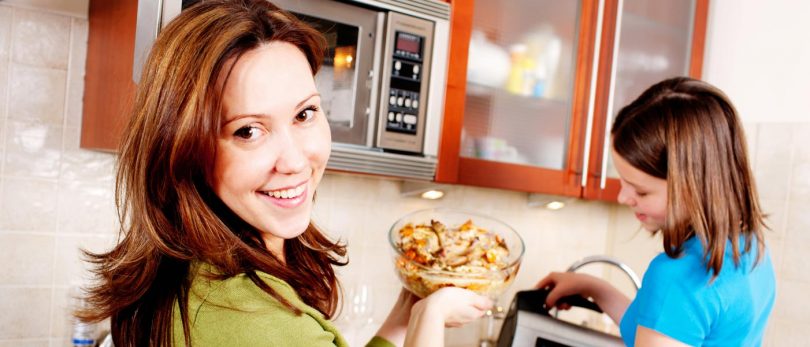Preparing and cooking meals at home is a good way to eat more healthfully, because you can control the ingredients and amounts of food going into the meals, as well as how much you spend. While cooking can feel like a daunting task, there are kitchen appliances that can help you cook healthily and save time. Here are four that Kelvin Lee, MS, RD, CDN, Clinical Dietitian at UHS, recommends:
Slow Cookers
These have been around for decades, but they are still one of the best ways to prepare meals in advance, says Lee. If you have time in the morning to prepare the ingredients and place them in the slow cooker, you’ll have a meal ready for you when you get home after a long day.
Electric Pressure Cookers
If you don’t have time to prepare ingredients in the morning, consider using an electric pressure cooker. Because they cook at such high temperatures, pressure cookers significantly lessen cooking time, helping you to serve and eat meals more quickly when you get home. “I’ve made pulled chicken and pulled pork—which usually take hours if you use the traditional low-and-slow method—in as little as 20 minutes,” says Lee. Many electric pressure cookers also double as slow cookers.
Air Fryers
While not completely necessary, air fryers are great for people who love fried food but want to make these normally high-fat dishes a little lighter. Air fryers use fast moving circulated hot air to crisp up food instead of oil, which preserves taste and texture but cuts down on fat. Preparation and cleanup are also easy—some air fryer components can be taken apart and placed in the dishwasher.
Microwaves
“This is a bit of a twist,” says Lee, “but it makes sense, because we all have them in our homes and already know how to use them.” Microwaves are handy and time saving, particularly if you make a large batch of something like stew or chicken and rice, which can be saved in containers and reheated later. Lee recommends using glass containers over plastic, because they are sturdier and contain less chemicals, and making sure you’re reheating leftovers to 165 degrees Fahrenheit using a food-grade thermometer, to reduce the risk of foodborne illness. “The technology behind microwaves preserves much more of the nutrients in the foods.” he adds.
GET HEALTHY
UHS offers a wide array of nutrition services. To learn more about what is available, visit nyuhs.org.







